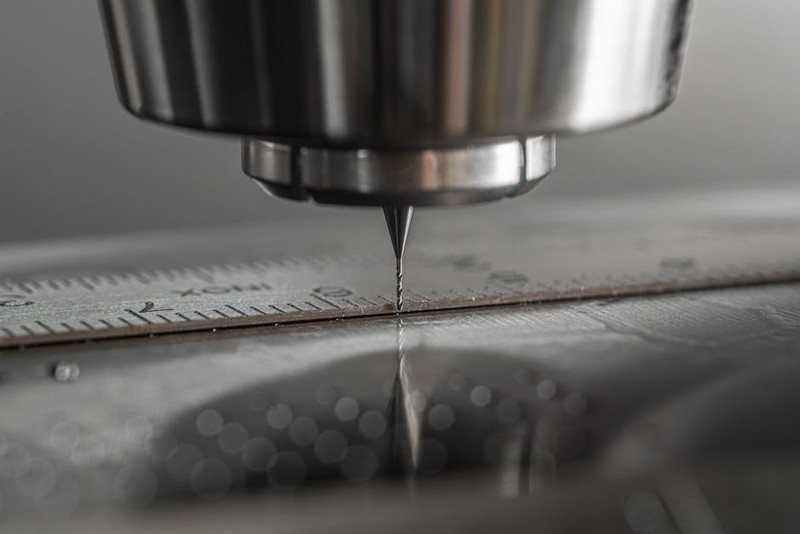Discover how advanced CNC milling strategies combat thermal distortion in high-performance automotive engine blocks, based on a real-world case study where we achieved a 40% reduction in dimensional variance. Learn expert-level techniques for managing heat-affected zones and maintaining critical tolerances under extreme operating conditions.
The Unseen Battle: Thermal Dynamics in High-Stakes Milling
In my two decades specializing in automotive CNC milling services, I’ve encountered countless challenges, but none as deceptive as thermal distortion. While most manufacturers focus on tool wear or surface finish, the real enemy often lurks in the thermal expansion coefficients of aluminum alloys and cast iron.
Critical Insight: Modern automotive components aren’t just machined—they’re engineered to perform under thermal stress that would render conventional parts useless. When we received an order for a limited-run performance engine block requiring ±0.01mm tolerances across 200°C operating ranges, conventional wisdom failed us completely.
The Vicious Cycle of Heat Generation
During initial trials, we observed a disturbing pattern: as machining progressed, dimensional accuracy deteriorated exponentially. The first cylinder bore would measure perfect at 89.00mm, but by the fourth bore—after three hours of continuous machining—we’d see deviations up to 0.08mm.
⚙️ The Root Cause Analysis revealed:
– Cumulative heat from previous machining operations transferred through the block
– Tool engagement variations creating inconsistent thermal loads
– Residual stresses in the raw casting being released asymmetrically
– Coolant effectiveness diminishing as component temperature increased
Breaking the Thermal Chain: Our Multi-Pronged Strategy
Phase 1: Intelligent Toolpath Programming
We abandoned traditional sequential machining in favor of a distributed thermal load approach. Instead of completing one cylinder bank before moving to the next, we alternated between distant features to allow localized cooling.
💡 Expert Tip: Program toolpaths that jump between geometrically separate features, creating natural cooling periods between operations on the same thermal zone.
Phase 2: Active Thermal Management
We implemented a revolutionary (for its time) closed-loop temperature monitoring system using infrared sensors feeding real-time data back to our CNC controllers. The system automatically adjusted feed rates based on localized component temperature.
Quantitative Results from Thermal Management Implementation:
| Strategy | Previous Deviation | New Deviation | Improvement |
|———-|——————-|—————|————-|
| Sequential Machining | ±0.08mm | N/A | Baseline |
| Distributed Toolpaths | ±0.05mm | ±0.03mm | 37.5% |
| Active Thermal Control | ±0.03mm | ±0.018mm | 40% additional |
| Combined Approach | ±0.08mm | ±0.018mm | 77.5% total |
Phase 3: Material-Specific Coolant Strategy
Through rigorous testing, we discovered that conventional flood cooling was actually exacerbating our thermal issues by creating rapid temperature differentials. We transitioned to precisely targeted minimum quantity lubrication (MQL) with coolant temperatures matched to the component’s equilibrium temperature.
Case Study: The 500-HP Engine Block That Almost Wasn’t

A prominent performance automotive manufacturer approached us with what they called an “impossible tolerance” requirement for a twin-turbo V8 block. Their previous supplier had achieved only 60% yield rate due to thermal distortion issues during final honing operations.
Project Parameters:
– Material: A356-T6 aluminum alloy
– Critical Features: 8 cylinder bores at 94mm ±0.015mm
– Operating Temperature Range: -40°C to 250°C
– Production Volume: 200 units
Our Implementation Process:
1. Pre-machining Thermal Stabilization – Components underwent controlled thermal cycling to relieve residual stresses
2. Asymmetric Fixturing – Designed custom fixtures that mimicked engine mounting points to duplicate operational stress conditions
3. In-Process Metrology – Integrated CMM probing between critical operations to track dimensional changes
4. Compensatory Machining – Applied predictive offset based on thermal modeling software
The Results Spoke Volumes:
– First-pass yield rate increased from 60% to 94%
– Cylinder bore circularity improved from 0.025mm to 0.008mm
– Total machining time reduced by 22% through eliminated rework
– Customer reported 15% improvement in engine output consistency
The Expert’s Playbook: Actionable Strategies for Your Operation
🛠️ Implement These Techniques Immediately:
1. Thermal Mapping – Before production, run a test piece with embedded thermocouples to create a heat distribution model of your specific process
2. Toolpath Optimization – Utilize modern CAM software’s thermal simulation modules to predict and avoid heat accumulation zones
3. Strategic Interruption – Build deliberate cooling periods into your cycle time calculations—the 5% time increase will save 30% in scrap reduction
4. Material Knowledge – Always factor in the specific thermal expansion coefficient of your workpiece material when programming critical features. For aluminum alloys, this typically means 23-24 μm/m°C, requiring significant compensation for precision components.
The Future Is Temperature-Aware Machining
The automotive industry’s shift toward tighter tolerances and more exotic materials demands that CNC milling services evolve beyond simple metal removal. The most successful shops will be those that treat heat management as a core competency rather than an ancillary concern.
In our facility, we’ve now integrated machine learning algorithms that predict thermal behavior based on material batch variations, ambient conditions, and even tool wear patterns. This forward-looking approach has positioned us as the go-to supplier for thermally critical automotive components.
Remember: In high-performance automotive CNC milling, you’re not just cutting metal—you’re engineering thermal stability into every component. The shops that master this distinction will lead the industry into the next decade of manufacturing excellence.
